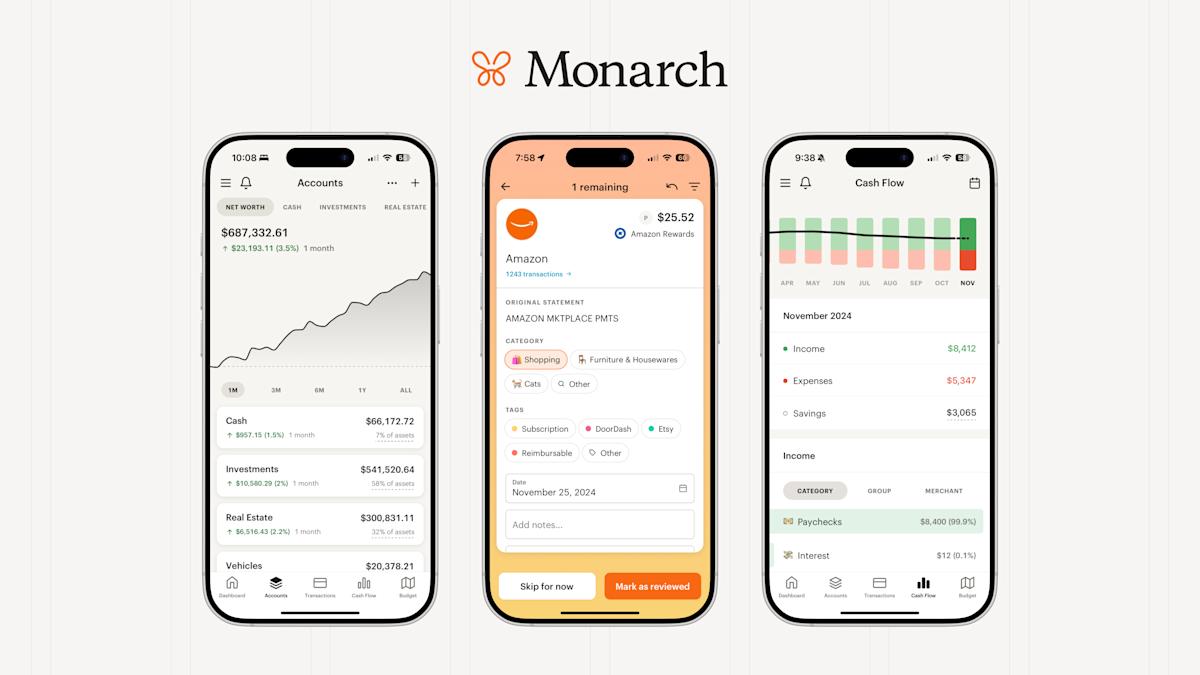This request seems a bit unusual, so we need to confirm that you’re human. Please press and hold the button until it turns completely green. Thank you for your cooperation!
Blog
-
Just a moment…
Just a moment… -

Carlos Yulo is the guiding light for Brits Jarman and Whitehouse
Jake Jarman and Luke Whitehouse on what they learned after training with Carlos Yulo
With just five months to go until Paris 2024, Yulo split with his long-time coach with whom he trained in Japan, and headed back to the Philippines before being…
Continue Reading
-

Shohei Ohtani makes MLB history to send Dodgers back to the World Series
Shohei Ohtani is not new to making headlines but the Japanese great’s performance on Friday (17 October) in Game 4 of the National League Championship Series has the plaudits rolling in.
Cited as perhaps one of the greatest single-game baseball…
Continue Reading
-

Assessing Airbnb (ABNB) Valuation as Shares Rebound from Recent Lows
Airbnb (ABNB) shares climbed nearly 2.5% today, reflecting renewed investor interest as the stock continues to recover from its dip over the past 3 months. Recent trading momentum highlights shifting sentiment in the travel platform.
See our latest analysis for Airbnb.
Airbnb’s share price rebound this week follows several choppy months, with the stock still trailing its year-ago levels as shown by a 1-year total shareholder return of -7.7%. However, positive price action lately suggests market sentiment may be turning, as investors start focusing on the company’s long-term growth prospects.
If renewed momentum in travel platforms has you exploring fresh ideas, now is a great time to see what’s happening among fast-growing companies with strong insider backing via our fast growing stocks with high insider ownership.
But with Airbnb’s stock still trading about 10% below analyst price targets and a healthy gap to some estimates of intrinsic value, investors are left pondering whether this is the start of a bargain opportunity or if the market has already accounted for brighter days ahead.
The most widely discussed narrative on Airbnb puts its fair value well above the current share price, highlighting a major disconnect between the stock’s recovery and what long-term believers see as its true growth potential. According to TickerTickle, this valuation is anchored in big bets on the product evolution and future scale outside the US.
They have launched long-term rentals, made over 500 product improvements, and are going all in on AI to make the platform smoother. It is easier now to find the right stay without scrolling for 20 minutes.
Read the complete narrative.
Want to know why this fair value projection stands out? The hook is a turbocharged revenue mix and future margins that would put Airbnb in the top tier of consumer tech names. Only the full narrative reveals which aggressive forecasts are behind these sky-high expectations.
Result: Fair Value of $163.75 (UNDERVALUED)
Have a read of the narrative in full and understand what’s behind the forecasts.
However, regulatory pressure in Europe and unresolved tax disputes in the US remain risks that could quickly alter the upside argument for Airbnb investors.
Find out about the key risks to this Airbnb narrative.
Looking from a market ratios perspective, Airbnb trades at a price-to-earnings ratio of 29.4x, which is higher than the US Hospitality industry average of 23.5x, but just below its peer group average of 31x. The fair ratio based on historical patterns comes in at 30.9x, indicating that the stock is actually near where the market could expect it to settle over time. This gap raises the question: are current expectations too high, or is there further room for upside if Airbnb outperforms?
Continue Reading
-

Meet the AI Stock That’s Crushing Nvidia and Palantir in 2025
-
Nvidia and Palantir have climbed in the double and triple digits this year as investors pile into artificial intelligence (AI) leaders.
-
This younger player is active in a new and exciting space that’s offering AI customers exactly what they need.
-
10 stocks we like better than Nebius Group ›
Nvidia (NASDAQ: NVDA) and Palantir Technologies (NASDAQ: PLTR) have been two stocks investors could count on for outsized gains over the past few years — and that continues as they both head for increases of more than 30% and about 130%, respectively, this year. This is thanks to the companies’ strengths in the artificial intelligence (AI) market.
Nvidia designs the world’s most sought-after AI chip, one that fuels the most essential AI tasks. And Palantir helps customers immediately apply AI to their operations and generate game-changing results. These companies already are benefiting from AI, and so are their customers.
In spite of these successes, Nvidia and Palantir haven’t been scoring the biggest gains among AI players in recent months. In fact, one stock in particular has left these two market giants in the dust when it comes to stock performance. Let’s meet the AI stock that’s crushing Nvidia and Palantir in 2025.
I might surprise you when I say this player, in its current form, didn’t even exist about a year and a half ago. It formed when Russian tech company Yandex sold off its Russian businesses last summer and reorganized under a new name with a headquarters in Amsterdam. I’m talking about Nebius Group (NASDAQ: NBIS), a stock that’s jumped more than 300% this year.
Nebius soared into the spotlight, offering something in high demand right now — and likely this demand will continue in the years to come. The company provides neocloud services, meaning it offers compute for AI workloads as well as a selection of managed services for customers.
This is extremely practical, as it means customers don’t have to buy their own high-powered graphics processing units (GPUs) and instead can go to Nebius to rent access to these chips. And it also saves customers time, as they don’t have to wait to ramp up a facility, but instead can take advantage of infrastructure that already exists.
Of course, Nebius competes with cloud giants such as Alphabet‘s Google Cloud and Microsoft Azure — customers can run AI workloads through those services too. But major cloud service providers offer a wide range of services beyond AI, while Nebius has focused on specifically serving the AI customer. This specialization could help it fine-tune its offering to the needs of customers and stand out. On top of this, demand for AI capacity is so strong that there is room for the major cloud providers and up-and-coming neocloud players like Nebius all to generate growth.
Continue Reading
-
-

Ashes 2025-26: Australia captain Pat Cummins to play ‘major part’ against England – George Bailey
Cummins was ruled out of Australia’s limited-overs series against New Zealand and India last month after scans revealed a lumbar bone stress in his back.
He has a history of back injuries, with flare-ups in 2012-13, 2013-14 and 2015-16 causing him…
Continue Reading
-

Metro hospital cancer surgeon debunks 4 myths about breast cancer: ‘Only 15% of breast cancers are due to genetic…’
Breast Cancer Awareness Month: Despite growing awareness campaigns, many people in India still hold misconceptions about breast cancer – from who it affects to how it spreads. This lack of accurate information, coupled with the stigma…
Continue Reading
-

One of our favorite budgeting apps has 50 percent off annual plans right now
Those looking for a better way to keep track of their finances should consider a budgeting app. There are dozens of them on the market now, and one of our favorites is running a discount for new subscribers. Monarch Money is offering 50 percent…
Continue Reading
-

Gold prices are so high, even central banks are feeling FOMO
By Myra P. Saefong
Central banks view gold as a ‘key, liquid component of their reserves’
Germany’s central bank, the Deutsche Bundesbank, holds the world’s second-largest gold reserves, behind the U.S.
Gold prices at record highs sounds like a broken record, but central banks have continued to buy more than they’re selling, even with prices for the precious metal at their highest levels ever.
“Central banks continue to be consistent and strategic buyers of gold, even at record prices, because of the role it plays in strengthening their reserve portfolios,” Joe Cavatoni, senior market strategist at the World Gold Council, said in comments sent to MarketWatch Friday.
“For many, this is about diversification, stability, and long-term confidence in their holdings,” he said.
“In an environment of persistent geopolitical uncertainty, shifting interest rate expectations, and questions around the reliability of fiat currencies such as the U.S. dollar, gold remains a trusted store of value that’s independent of any one government or financial system,” Cavatoni said. “We’re seeing a structural, not cyclical, change in how central banks view gold – as a key, liquid component of their reserves.”
Central banks around the world added 19 metric tons to their global reserves in August, according to data from the World Gold Council dated Oct. 3. That followed a month-to-month fall in July.
Gold futures have climbed by nearly 60% this year, with prices on Comex notching record-high settlements 48 times so far in 2025, according to Dow Jones Market Data. Gold for December delivery (GC00) (GCZ25) last marked a record finish of $4,304.60 an ounce on Oct. 16.
The record-high price “likely remains a constraint on the level of buying by central banks,” but the recent moderation in buying “does not necessarily signal that central banks as a whole are losing interest in gold,” the WGC said in its report.
Central-bank purchases of gold rose in August.
Strength in central-bank purchases “proves that central banks aren’t immune to FOMO,” which refers to the fear of missing out, Adrian Ash, director of research at BullionVault, told MarketWatch on Friday.
Strength in central-bank gold purchases ‘proves that central banks aren’t immune to FOMO … [and] confirms that the bid from sovereign states remains keen, even at new record highs’ in gold prices.Adrian Ash, BullionVault
“Why wait for gold prices to double?” he said. The central-bank purchases also confirm that the “bid from sovereign states remains keen, even at new record highs” in prices for the precious metal.
Read: Gold is the hot topic at the IMF and World Bank meetings. Could that help put a lid on prices?
As of October, the U.S. is the country with the largest gold reserves, according to BestBrokers, an investment-research platform, citing data from the WGC and International Monetary Fund.
The U.S. holds about 8,133.5 metric tons of gold in its reserves.
The U.S. holds about 8,133 metric tons of gold stored at U.S. Mint locations in Fort Knox, Kan.; West Point, N.Y.; and Denver, as well as a small amount in the vaults at the New York Federal Reserve, according to Edmund Moy, a former director of the U.S. Mint, which is part of the Treasury Department. He noted that the U.S. Mint’s director has custodial responsibility over U.S. gold reserves.
Moy, who is now senior IRA strategist for precious-metals distributor U.S. Money Reserve, said the U.S. holds the most gold reserves as a direct result of U.S. President Franklin D. Roosevelt requiring Americans to turn in their gold coins to the federal government starting in 1933. It’s also a result of foreign nations paying in gold for American products during World War II, he said.
At one point many years ago, America’s gold reserves stood at more than 20,000 metric tons and were used to back the U.S. dollar, but in the early 1970s, countries began to suspect that the U.S. had printed more dollars than it could back with gold, which started a run on redeeming dollars for gold, Moy said. President Richard Nixon stopped those redemptions in 1972, and U.S. gold reserves have remained stable at around 8,113 tons, he said.
In August, the biggest central-bank gold buyer was the National Bank of Kazakhstan, and the National Bank of Bulgaria and Central Reserve Bank of El Salvador also jointed the buyers list, according to the WGC.
The National Bank of Poland has been the largest purchaser year to date, and it “reaffirmed its commitment to gold by increasing its target share,” the WGC said.
Poland, Turkey and the Czech Republic have added to their gold reserves for at least 24 months straight, said Moy. China and India have also been consistently building up their gold reserves – “both to strengthen their currencies and to reduce their dependence on the [U.S. dollar],” he said.
Central banks continue to buy gold, even at record-high prices, primarily because they want to reduce their exposure to the U.S. dollar given their “concerns over the deteriorating U.S. fiscal condition and increasing economic uncertainty and [the] potential impact on their dollar holdings,” Moy said.
‘Central banks will continue to be big players in the gold market for the foreseeable future.’Edmund Moy, U.S. Money Reserve
Some countries, such as Russia, want to have some of their reserves in a “sanction-proof asset,” he said, and others want to reduce their dependence on the U.S. dollar while “exploring alternatives” to displace the dollar as a reserve currency.
“Increasing gold reserves will improve their positioning” in whatever direction those alternatives take, Moy said. “Central banks will continue to be big players in the gold market for the foreseeable future.”
-Myra P. Saefong
This content was created by MarketWatch, which is operated by Dow Jones & Co. MarketWatch is published independently from Dow Jones Newswires and The Wall Street Journal.
(END) Dow Jones Newswires
10-18-25 0700ET
Copyright (c) 2025 Dow Jones & Company, Inc.
Continue Reading
-

ER Doctors Say These Are The Heart Symptoms Women Should Never Ignore
At one time, heart disease was believed to largely only happen to men, which meant women weren’t included in health studies on the topic.
While this has changed ― and it’s now known that heart disease is the leading cause of death for women…
Continue Reading